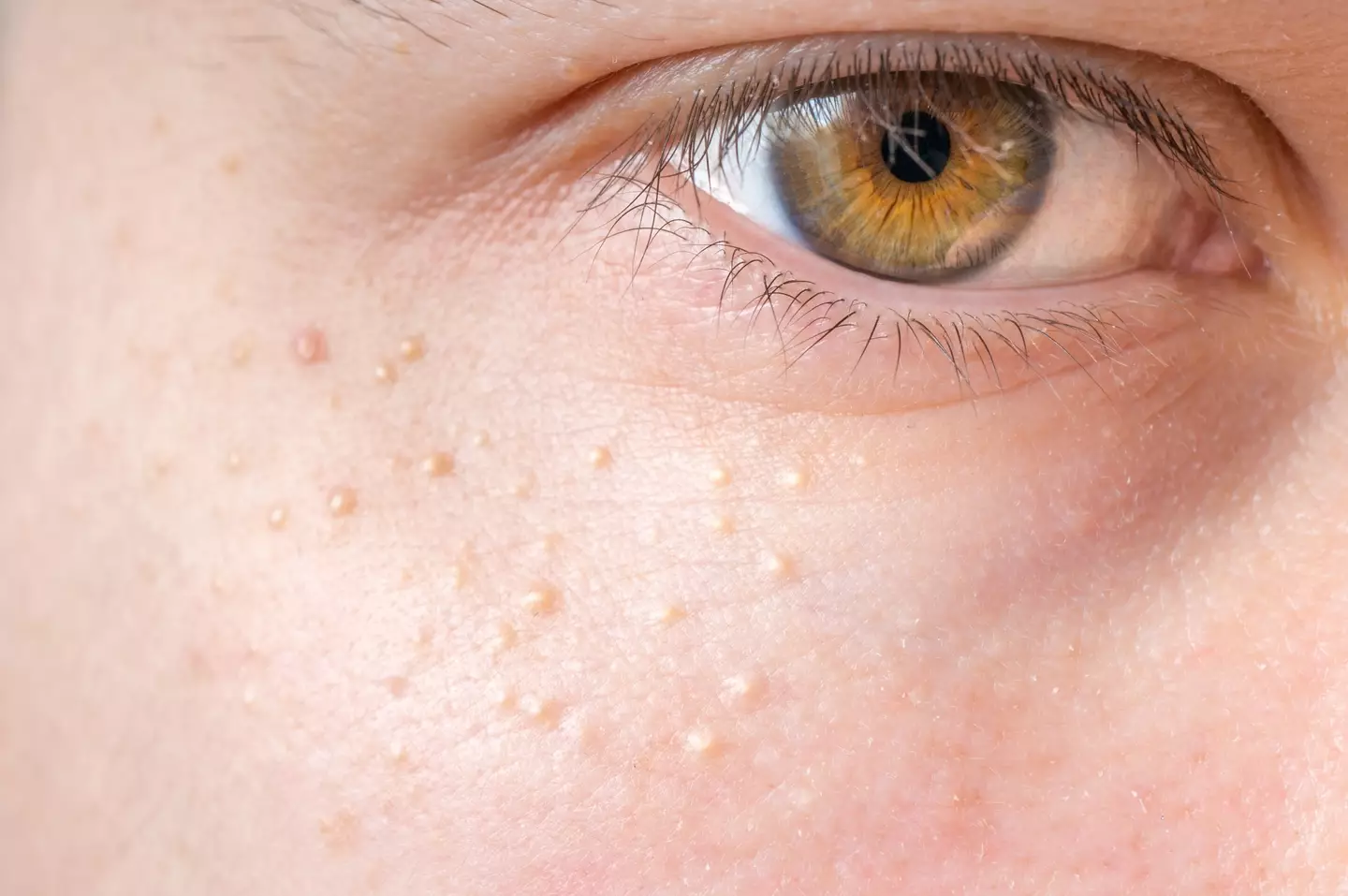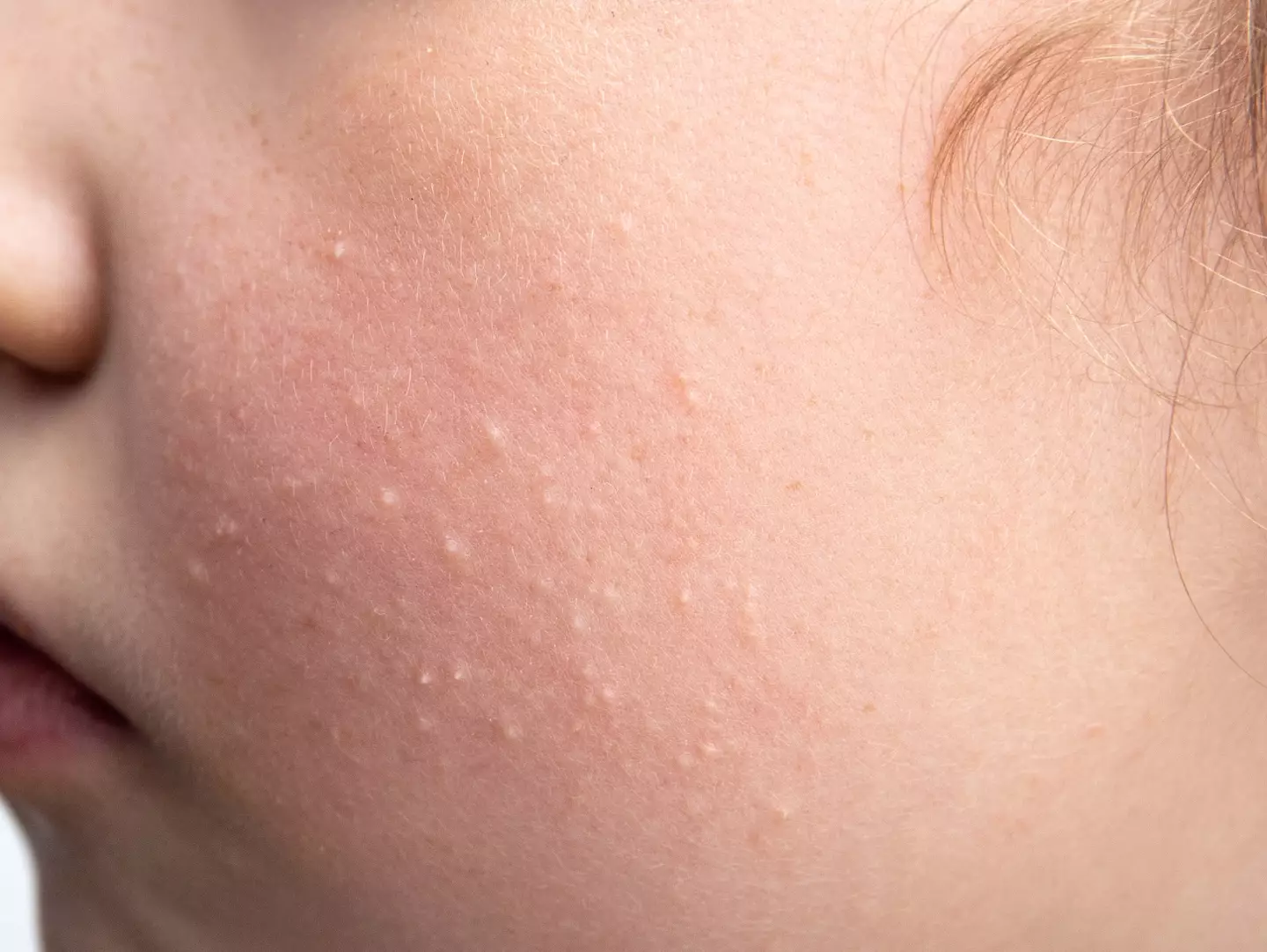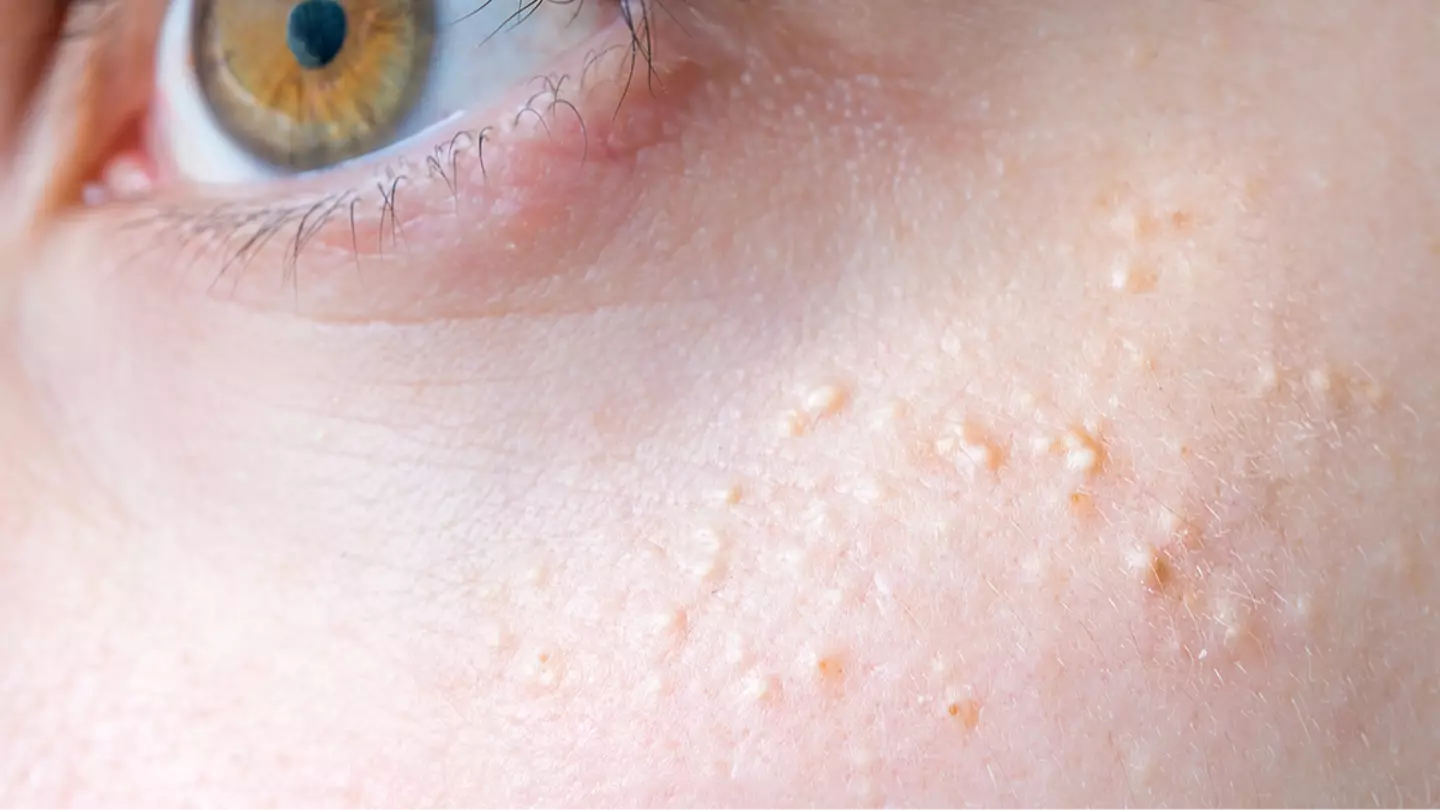Specialists have sounded an alert regarding white spots that might appear on your face and genital areas.
These spots are fairly common and typically harmless, though their presence can be worrying for some individuals.
The occurrence of these spots is due to the accumulation of keratin or dead skin cells, forming miniature cysts on the skin.
These spots can make their appearance at any stage of life but are more prominent during puberty when hormonal changes can make the skin oilier.
Despite their commonality, health professionals advise anyone who observes these spots to take precautions to prevent potential complications.

These formations are known as milia, or milk spots.
Cleveland Clinic explains: “They become more noticeable during or after puberty.
“They often appear on and around your lips and sometimes on your penis and vagina. They’re a natural part of your skin, but treatments can shrink or remove them.”
It is essential to recognize that these spots differ from acne or other skin issues like cold sores or genital herpes.
Dr. Marnie Nussbaum, a clinical instructor of dermatology at Weill Cornell Medical College, clarified to Women’s Health: “Milia are tiny keratin-filled cysts on the surface of the skin.
“They are often confused with whiteheads or acne breakouts. However, these bumps are filled with hard balls of keratin, as opposed to liquid sebum and bacteria. And they cannot be extracted easily.”
Acne results from skin pores being blocked, sometimes accompanied by bacterial infection.
In contrast, herpes is a distinct viral infection, commonly spread through close physical contact, often sexual, with an infected individual. Cold sores arise from a similar virus but typically appear on the face.
Though milia are not unusual, healthcare professionals have issued a caution regarding these bumps and white spots.
The advice is to resist the urge to pick or pop them, as this will not resolve the issue.

Moreover, habitual picking might escalate to an infection.
While it may be tempting to try and remove them, introducing an infection could exacerbate the situation.
Healthline advises: “Don’t pick or squeeze Fordyce spots. This won’t make them go away, and it can cause infections to develop.”
If the presence of milia on your skin is bothersome, there are available treatments to eliminate them.
Additionally, if you notice any unfamiliar skin changes, it is prudent to consult your doctor for advice.

